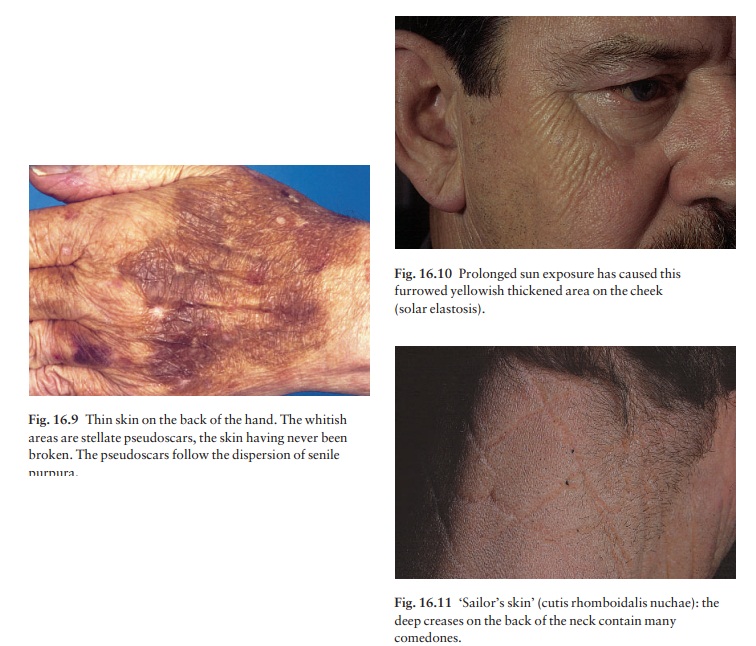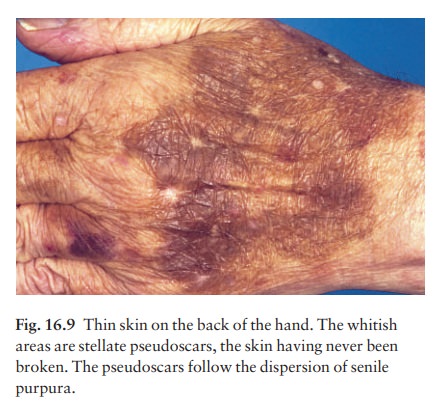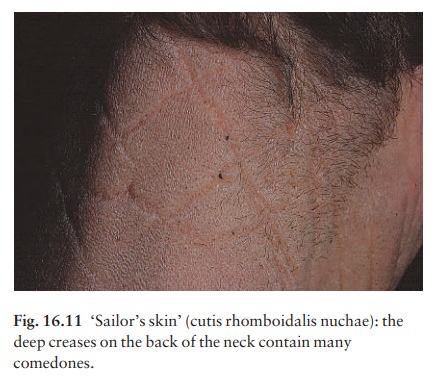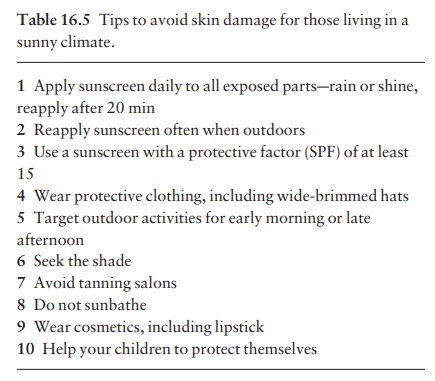Chapter: Clinical Dermatology: Skin reactions to light
Cutaneous ageing

Cutaneous
ageing
The
trouble with old skin is the way it looks rather than the way it behaves. Skin
chronically damaged by UVR during childhood thereafter looks old. This
‘photoageing’ effect causes the skin to become thin on the extremities, so that
it bruises and tears easily (Fig. 16.9). The elastic fibres become clumped and



Chronic exposure to sunlight, or to UVR in tanning parlours, also
causes lentigines, freckles, xerosis and, of course, skin cancers. The bronzed
young skins of today will become the wrinkled spotted rough prune-like ones of
tomorrow.
Wrinkles
occur when the dermis loses its elastic recoil, failing to snap back properly
into shape. UVR damages elastic tissue and hastens this process. Although
face-lifts can smooth wrinkles out, there is no way to reverse the damage
fully; however, tretinoin cream (Formulary 1) seems to help some pati-ents.
Prevention (reducing exposure to UVR) is better than any cure, and is
especially important in sunny climates (Table 16.5).
Skin ages even in sun protected areas, but much more slowly. The dermis thins, skin collagen falls by about 1% per year throughout adult life, and becomes more stable (less elastic). Fibroblasts become sparser in the dermis, accounting for reduced collagen synthesis and slower wound healing.

Related Topics